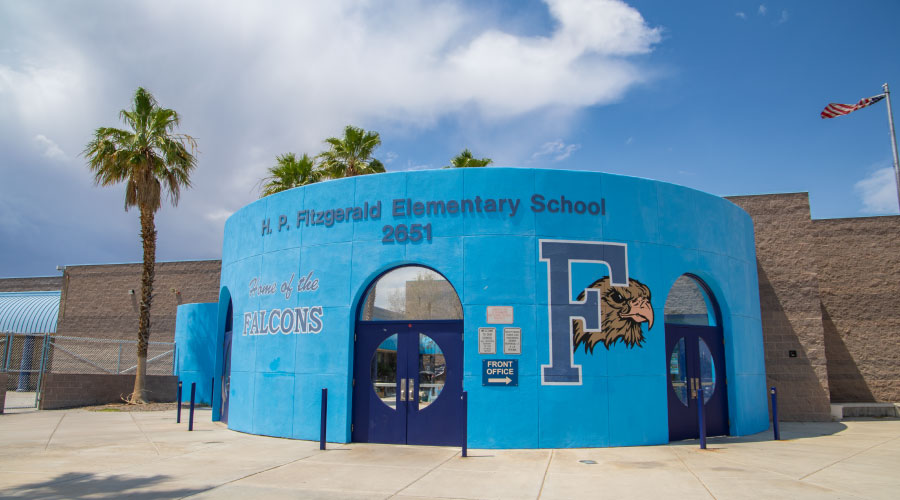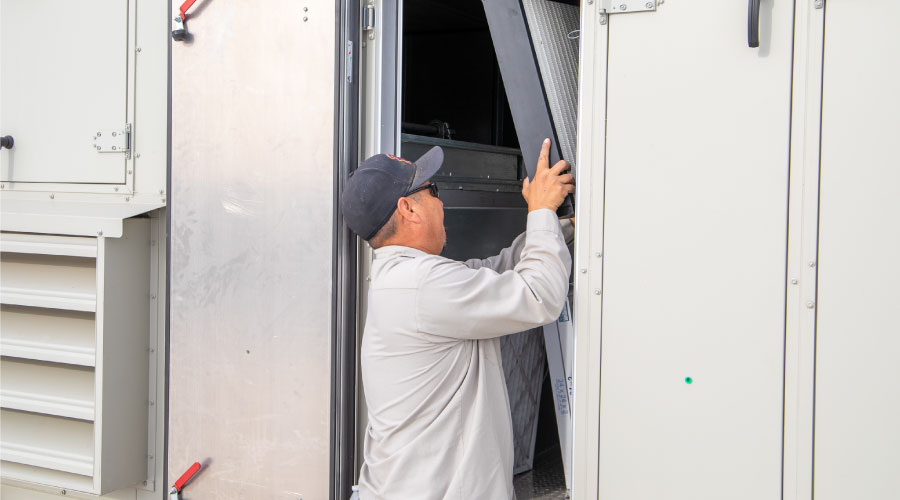Las Vegas-Area Schools Double Down on IAQ Issues
7/3/2023
K-12 school leaders in Las Vegas were on to something in 2019 when they started taking a closer look at the air in their buildings.
Who could have imagined that less than a year later, indoor air quality (IAQ) would rocket up the priority list for maintenance and engineering managers at K-12 school districts during the COVID-19 pandemic?
Nobody could have predicted the challenges COVID-19 would bring. But because of its forward thinking, the Clark County School District (CCSD) had a head start on addressing IAQ issues as part of the pandemic recovery. Their efforts were notable enough that the White House invited the district’s superintendent to present at an IAQ summit last year.
All about comfort
CCSD is the fifth largest school district in the country, with 7,910 square miles that include the city of Las Vegas.
The district has more than 304,000 students in 370 schools and 44 administrative facilities with more than 38 million square feet of space. The facilities department has an operating budget of $150 million a year, about two-thirds of which goes toward utility bills.
One area the district emphasizes is student comfort. Studies show that students perform best when they have comfortable classrooms, so to improve student comfort, one manager leaned on his experience from a local industry.
“Our chief of facilities (in 2019) came from the casino industry,” says Douglas Diaz, the district’s director of facilities management. “One of the things that he said about the casino industry is that they want to make sure customers were alert and at attention while playing their games. So it occurred to us that if it’s impacting the way players are playing in the casino industry, then it would definitely have an impact on the way students would be.”
With a goal of providing safer and healthier environments for the students and staff, CCSD started addressing IAQ. The district began testing high-efficiency MERV-13 filters in September 2019 and initiated an HVAC coil-cleaning program in October 2019.
In March 2020, Mark Campbell joined CCSD as the district’s director of sustainability, energy and environmental service. He started his career at CCSD working from home.
“I didn’t meet a lot of the people I worked with for many months, but it was very shortly after I started that we started to address indoor air quality,” Campbell says. “We wanted to get back into the school and thought about what we needed to do. What can we take advantage of? Given that our students aren’t in the building, what can we do?”
Seizing an opportunity
With the students in distance learning and faculty working at home, the maintenance team was able to replace more than 50,000 air filters, including upgrading MERV-8 filters to MERV-13 filters where it was possible. Maintenance technicians completed coil cleaning across all the district’s schools, and they inspected and repaired outdoor air intakes to increase minimum outdoor air levels when possible.
“We started to blitz filter installation faster and at a pace than we’ve never done before and went to the school district advocating for the additional budget to upgrade filters on a regular basis,” Campbell says. “We did the coil cleaning across the school district, which had not been done at that level in probably 15 to 20 years. We looked at the functionality of the units, and that provided our biggest issue – the old units that aren’t actually moving the air. Then we wanted to bring in the right amount of fresh air and increase that where we could.”

While IAQ is most often associated with HVAC systems, the district also replaced carpet in about 300 schools. Dust, dirt and pollen can accumulate in carpets when they are not properly cleaned and vacuumed. When saturated by water, carpet can become a source for microbial growth and require steam cleaning or removal. The carpet replacement project was first viewed as just an upgrade before officials realized the health benefits of replacing it.
“It did not start as an air quality effort,” Campbell says. “It was a desperate need of the school district. Through really good financial stewardship over the last few years, our leadership has been able to find ways to build broad, impactful projects across the district, and one of the things that rose to the top was the need for carpet. You look at a school, and you hate to see carpet reach 20 years old.”
Maximizing maintenance
With so many schools spread over such a large expanse, maintenance can be a challenge, even with a facility management staff of about 700 employees.
“Our open work orders are a number that rises and falls,” Campbell says. “It’s in the thousands, and not that we ever make it to zero, but we need all hands on deck. When it comes to our maintenance staff, our building engineers, custodians and even me and our director have been on a roof and been known to change a filter or two. We use contractors with care, is how I would say it.”
To help with regular tasks such as replacing filters, the district instituted a building engineering program that assigns a maintenance person to one school or a handful of nearby schools. Campbell describes this person as “the first responder for a work order or the handyman that can take care of most things on a day-to-day basis.”

CCSD has 50 building engineers serving about 70 schools. The decision to create these positions and place them in the designated schools was based on measured data.
“With the building engineers in strategic locations and particularly using them to do some of this work, we know we don’t need to send a contractor to that school because the engineers are there and they’re going to change air filters,” says Campbell, adding the district places a building engineer at every new school so that person is familiar with the originally installed systems. “They’ve been trained to do it, and they will do it the moment those air filters are shipped and can close that work order.”
Facing the future
Clark County experienced rapid growth around the turn of the century, which created pressure to keep up with new facilities to accommodate the resulting enrollment growth. Between 1998 and 2005, Campbell says the district added up to 10 new schools per year. While that growth rate has slowed, challenges remain in keeping the HVAC systems running efficiently.
As the population shifts within the district, CCSD has opted to use portable classrooms to alleviate space issues. The district has 2,000 portable classrooms, and some schools have as many as 16 portable units.
“It’s not our preferred environment for a student, but it’s kind of the only way we can provide an educational environment, given the capital constraints that we’ve had for decades,” Campbell says.
Campbell and Diaz are working with Clark County officials to improve the IAQ and the HVAC units in portable classrooms.
“We’re able to ramp up those efforts, and that means installing smart thermostats that measure CO2,” Campbell says. “We save energy by proper scheduling and understanding what’s going on in the spaces, and then we identify where we may or may not have a problem.”
Besides increasing the energy efficiency of the portable classrooms, the district will continue to focus its HVAC goals on achieving redundancy for existing systems while preparing its buildings for climate change that is expected to affect the region in coming decades.
“We need to design schools not for 2023 weather,” Campbell says. “We’re designing them for 2042 weather, so we’re upsizing the systems on the go and trying to make sure we have the ability to monitor CO2 and bring in more inside air. That is driving our engineers to have to think differently about how they design a school and how they think about the HVAC system. We need those systems to operate at higher temperatures than they’ve ever had to in the Las Vegas Valley and do it for decades.
“Beyond air quality, that’s one of the biggest areas of focus, and it still obviously impacts air quality because if we can’t get kids comfortable in school, we’re not serving our mission.”
Dave Lubach is the executive editor for the facility market team. He has eight years of experience writing for the facility management industry.